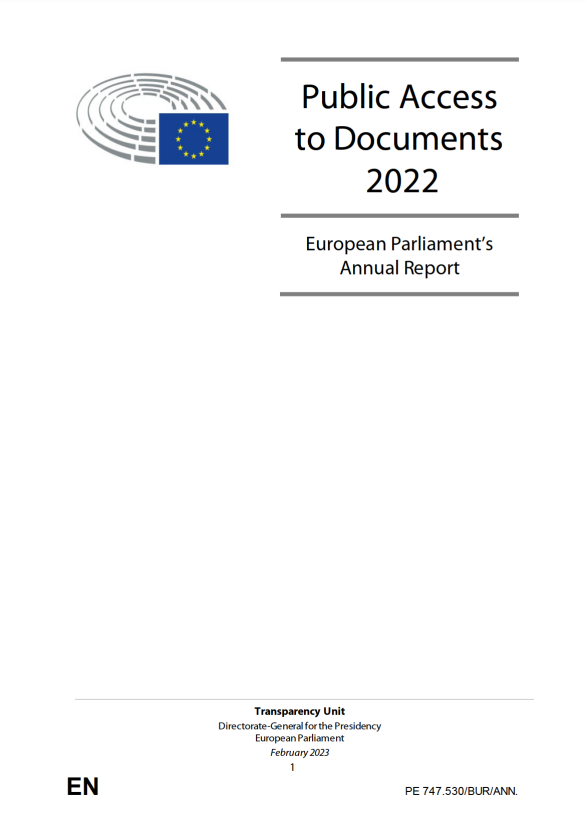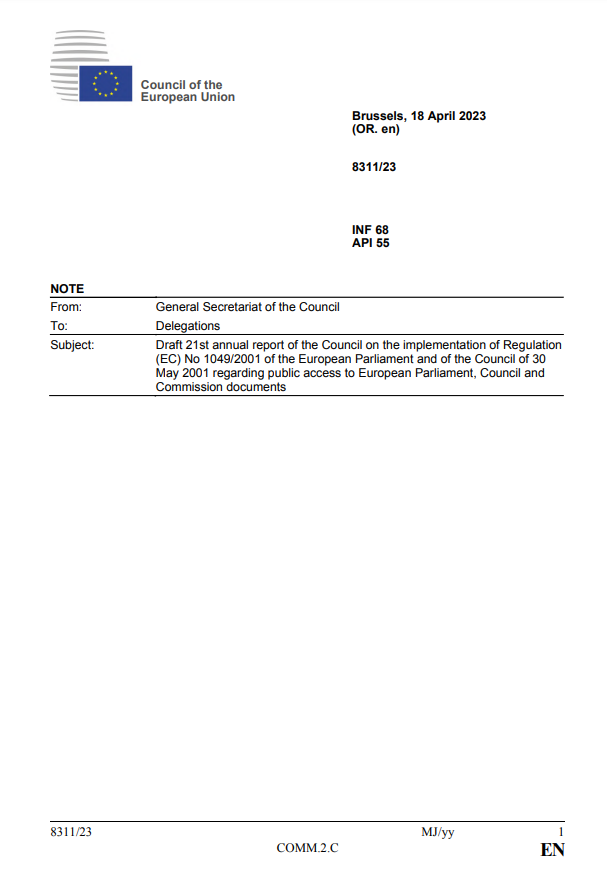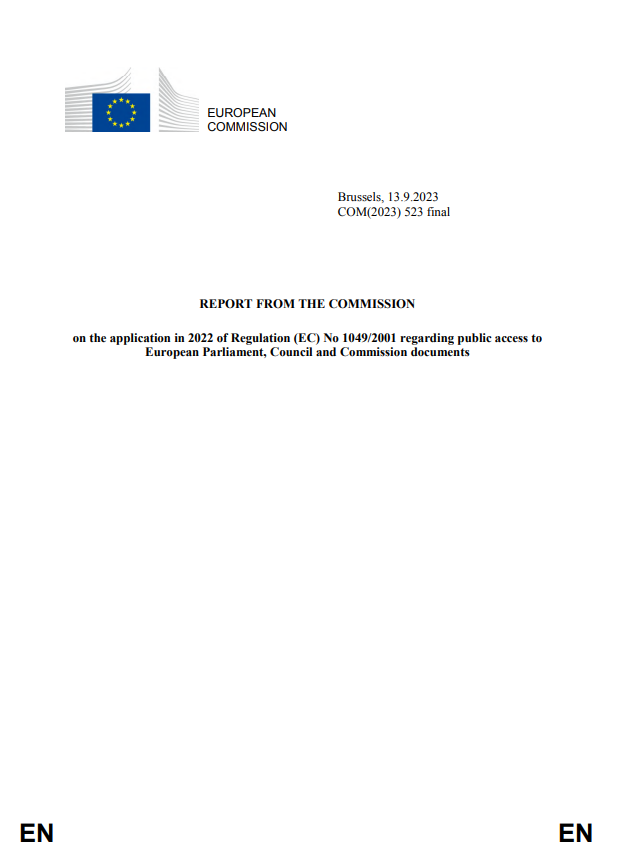Each year, the three core EU institutions, as well as a host of other bodies, publish their annual reports detailing the state of the implementation of Regulation 1049/2001 governing the public’s access to their documents. How did this right fare in 2022?
The EU’s public access to documents law was adopted in 2001. It obligates the institutions bound by it to draw up an annual report. These reports detail the main trends and effectiveness indicators of its implementation. They are typically published scattered throughout the year, with the European Parliament’s report appearing early on in the following year, the Council’s somewhere before summer, and that of the Commission after the summer. This stable trend reflects both the volumes of the requests that these institutions are faced with, and the speed with which they tend to handle access requests.
The general outlook: what do the reports tell us?
The European Parliament
The 2022 report of the European Parliament appeared in February of this year. It covered the full 635 requests for access, of which the largest share, namely about three-fifths, related to the substance of the Parliament’s work, i.e. legislative and committee documents. Requesters most frequently had a background in academia (33%), the legal profession (23%), and journalism (12%), and overwhelmingly filed their requests in English. However, a large minority of applicants (28%) did not disclose their professional background, which is not compulsory. In over 86% of cases, application requests led to the full satisfaction of the requesters. In another 10%, partial access was granted. The European Parliament does not disclose any information regarding the average handling time of requests – an aspect of the access law that the other institutions are known to be struggling with. However, given the relatively limited amount of requests, it can be inferred that delays in the handling of requests constitute less of a problem for the Parliament than for the Council and the Commission.
The Council
The Council report appeared in April. Its most up-to-date publicly available version formally remains a draft document (adopted at the meeting) – a far cry from the elaborate full-colour public report of several years ago. The institution in 2022 received 2,762 access requests. While the undisclosed profession category features relatively high here as well, at 15%, it is still considerably lower than is the case at the European Parliament. At a joint 41%, the same can be said for academics, lawyers, and journalists. While the Council does not report the language of requests, the geographical origin of requests suggests that a sizeable share of requests comes from inside the ‘Brussels bubble’. Namely, at 31% of the total, requests filed from Belgium top the list by a landslide, with the large member state Germany trailing in second place at 12%. 79% of documents (note: not requests) were disclosed in full; an additional 10% were disclosed in part. The three policy areas garnering most interest were justice and home affairs (19%), the common foreign and security policy (14%), and economic and monetary affairs (10%). In contradiction of the (in principle) statutory 15-day response deadline, the Council required an average of just over 16 days to respond to requests. Consequently, in 30% of requests, the Council required an extension of this deadline.
The Commission
The last implementation report to appear this year was that of the Commission, in September. Last year, the Commission received 7,410 initial access requests – near 12 times as much as the number of requests received by the European Parliament. The departments to which most requests were submitted were the Secretariat-General (the Commission’s coordinating body) (12%), Directorate-General Growth (economic affairs) (9%) and and the Directorate-General for international partnerships (8%). However as these top-3 figures betray, areas covered by requests were in fact very scattered. Of initial requests, a relatively low figure of 43% of documents were disclosed in full, with partial access being offered to an additional 35%. The disclosure figure was driven up slightly after the conclusion of administrative appeals. Curiously, the Commission report does not include information concerning the background of requesters, in deviation from the practice of the other two institutions. Information is also not provided regarding response time, an issue that has previously been flagged by the European Ombudsman as a problematic aspect of the Commission’s practice.

See also
What you reap is what you sow? Some (inconclusive) evidence confirms this trend
The request figures of the three institutions in 2022 represent a relative continuity vis-a-vis previous years, however marked by a slightly upward trend when regarded over several years. What stands out from the reports is the differentiated way of recording the key figures. This has historically made a precise comparison of implementation effectiveness difficult. However, there appears to be a relatively robust correlation between the number of documents requests and the rate of access (when the first is low, the second is high). This figure also seems commensurate to the number of documents that is made proactively available (apparently highest for the European Parliament and lowest for the Commission). Here, caution is however required in drawing any hard and fast conclusions. First, the types of documents published by the institutions differ significantly, with those of the European Parliament most frequently forming part of the ordinary (and mostly public) legislative procedure, whereas the Commission produces a more diverse range of document types, most of which are likely to be of an internal, administrative nature. Second, the institutions differ in the norms that they apply for deciding whether a document is to be proactively disclosed for public consumption. Notably, the Commission handles an elaborate coding system for different stages of the document life cycle, representing different stages of finality. Third, the form of making documents available also differs significantly between the institutions, making a correct count of documents difficult, and poorly reflected in the reported figures.
In a final reading, bare and decontextualised disclosure figures will tell us little about the appropriateness of a decision (not) to disclose a document. The best benchmark lies in the manner of application of the exceptions to disclosure enumerated in Regulation 1049/2001, to specific request cases. Nonetheless, the annual reports on access to documents do provide an interesting initial comparative probe into public interest into the institutions’ work, and the manner in which these institutions accommodate to this interest.






